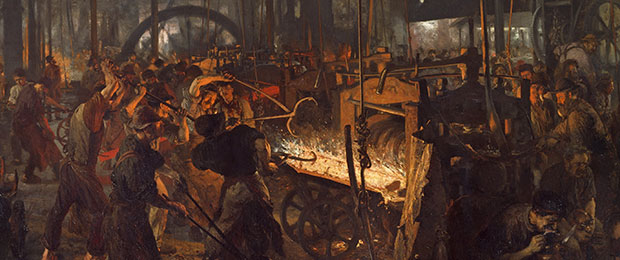- Microservices Without the Servers (Amazon) — By “serverless,” we mean no explicit infrastructure required, as in: no servers, no deployments onto servers, no installed software of any kind. We’ll use only managed cloud services and a laptop. The diagram below illustrates the high-level components and their connections: a Lambda function as the compute (“backend”) and a mobile app that connects directly to it, plus Amazon API Gateway to provide an HTTP endpoint for a static Amazon S3-hosted website.
- Privacy vs Data Science — claims Apple is having trouble recruiting top-class machine learning talent because of the strict privacy-driven limits on data retention (Siri data: 6 months, Maps: 15 minutes). As a consequence, Apple’s smartphones attempt to crunch a great deal of user data locally rather than in the cloud.
- NAS Backdoors — firmware in some Seagate NAS drives is very vulnerable. It’s unclear whether these are Seagate-added, or came with third-party bundled software. Coming soon to lightbulbs, doors, thermostats, and all your favorite inanimate objects. (via BetaNews)
- Most Consumers Wouldn’t Pay Publishers What It Would Take to Replace Mobile Ad Income — they didn’t talk to this consumer.
"Internet of Things" entries

No, the IoT does not need strong privacy and security to flourish
The Internet of Things will happily march along with lousy privacy and security, and we will be the poorer for it.
 “Without addressing privacy and trust, the Internet of Things will not reach its full potential.”
“Without addressing privacy and trust, the Internet of Things will not reach its full potential.”
This refrain can be heard at IoT conferences, in opinion pieces in the press and in normative academic literature. If we don’t “get it right,” then consumers won’t embrace the IoT and all of the wonderful commercial and societal benefits it portends.
This is false.
It’s a nice idea, imagining that concern for privacy and security will curtail or slow technological growth. But don’t believe it: the Internet of Things will develop whether or not privacy and security are addressed. Economic imperative and technology evolution will impel the IoT and its tremendous potential for increased monitoring forward, but citizen concern plays a minor role in operationalizing privacy. Certainly, popular discourse on the subject is important, but developers, designers, policy-makers and manufacturers are the key actors in embedding privacy architectures within new connected devices. Read more…

The validated learning process for building a hardware startup
How to validate your idea, and get your community engaged.
Buy “The Hardware Startup: Building Your Product, Business, and Brand,” by Renee DiResta, Brady Forrest, and Ryan Vinyard. Note: this post is an excerpt from the book.
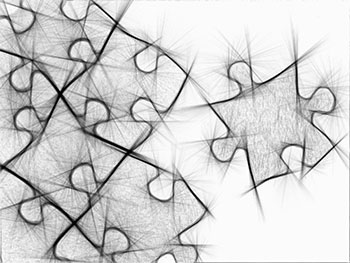 Hardware founders should strive for hypothesis-driven development and validate their ideas with customers as early as possible. This can be done before or alongside the prototyping process, but it should absolutely be done before moving toward tooling.
Hardware founders should strive for hypothesis-driven development and validate their ideas with customers as early as possible. This can be done before or alongside the prototyping process, but it should absolutely be done before moving toward tooling.
Changing your design or switching technologies becomes much more expensive once you’ve moved beyond a prototype, so it’s important to get it right the first time.
The foundation of effective validated learning is conversation. You want to talk to — and, more importantly, listen to — several distinct groups of people who will be critical to your success as a company.
Your fellow hardwarians
The first group of helpers on the road to building your product are fellow hardware founders. Not everyone within the hardware community is a potential customer who will help you unearth the roots of a particular pain point. But within this community are the people who have done it before. They have extensive experience and can provide invaluable guidance for specific problems. They’ll help you reduce waste in the production process. Certain steps in the development process, such as finding a contract manufacturer, are often driven by word-of-mouth referrals. Networking with other founders building products in your space will give you a better chance of getting these things right the first time. Read more…

Understanding the experience design of consumer IoT products
Great UX for IoT requires cross-discipline collaboration between design, technology, and business.
Download a free copy of our new report “User Experience Design for the Internet of Things,” by Claire Rowland, to learn about a framework for understanding the UX of consumer IoT products. Note: this post is an excerpt from the report.
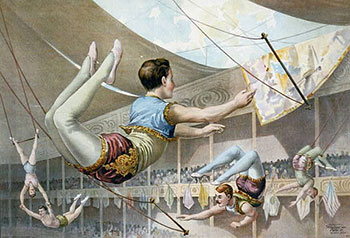 When we think of design for connected products, we tend to focus on the most visible and tangible elements. These are the industrial design of connected devices, and the user interfaces (UIs) found in mobile and Web apps and on the devices themselves.
When we think of design for connected products, we tend to focus on the most visible and tangible elements. These are the industrial design of connected devices, and the user interfaces (UIs) found in mobile and Web apps and on the devices themselves.
They are important concerns, which have a major impact on the end user’s experience of the product. But they’re only part of the picture. You could create a beautiful UI, and a stunning piece of hardware, and users could still have a poor experience of the product as a whole.
Designing for IoT is inherently more complex than Web service design. Some of this is to do with the current state of the technology. Some of this reflects our as-yet immature understanding of compelling consumer IoT value propositions. Some of this stems from the fact that there are more aspects of design to consider. Tackling them independently creates an incoherent user experience (UX).
Designing a great connected product requires a holistic approach to user experience. It spans many layers of design, not all them immediately visible. More than ever, it requires cross-discipline collaboration between design, technology, and business. Great UX may start with understanding users. But the designer’s ability to meet those users’ needs depends on the technology enablers, business models, and wider service ecosystem. Read more…

Quentin Hardy on Facebook’s drones
The O’Reilly Solid Podcast: The New York Times' deputy technology editor talks about technology, people, and power.
Subscribe to the O’Reilly Solid Podcast for insight and analysis about the Internet of Things and the worlds of hardware, software, and manufacturing.
 In our new episode of the Solid Podcast, David Cranor and I talk with New York Times deputy technology editor Quentin Hardy. Hardy recorded with us just after visiting Facebook’s Aquila drone project, which promises to extend Internet access to remote parts of the globe — and to advance a slew of aerospace and communication technologies through open sourcing.
In our new episode of the Solid Podcast, David Cranor and I talk with New York Times deputy technology editor Quentin Hardy. Hardy recorded with us just after visiting Facebook’s Aquila drone project, which promises to extend Internet access to remote parts of the globe — and to advance a slew of aerospace and communication technologies through open sourcing.
Projects like Aquila can challenge traditional government, but have their own tendency to create new mechanisms for control. “What’s clear is that existing systems of power will morph or collapse in decades to come because of these new technologies,” Hardy says, noting the contradiction that, in today’s world, “people have never been more empowered, and they’ve never been so controlled and repressed.”
We also talk about what’s happening in Shenzhen, China (which has been called “China’s Silicon Valley”), and the hardware hub’s dynamic mix of entrepreneurship, knockoffs, and innovation. Read more…

Talking to the IoT
When our stuff speaks to us, we exchange more than ideas.
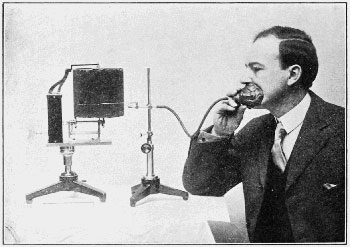 People are really good at talking to each other. That shouldn’t be too surprising. Conversation among human beings has evolved over a very long period of time — and now we’re starting to talk to our stuff, and in some cases, it’s talking back.
People are really good at talking to each other. That shouldn’t be too surprising. Conversation among human beings has evolved over a very long period of time — and now we’re starting to talk to our stuff, and in some cases, it’s talking back.
Asking Siri (or Cortana or Google Now) some simple questions is just the beginning of what’s coming. In fact, we’re in the midst of a significant shift in voice and conversation technology. Companies like Amazon, Facebook, and Google are falling over each other to hire researchers and acquire related companies, and they are starting to use this talent in new and interesting ways.
This is the first post in a series of articles I’ll use to explore speech and conversational interfaces. The subject will be dialog systems in general, with a focus on the intelligent interfaces we can expect to see more of in the future. Other topics could include:
- Design considerations for spoken language systems
- Emerging research in the area
- Changes to how we interact with technology plus the social impact they might have
If you’re someone with a finely tuned hype radar, some skepticism about just how good these technologies might be is understandable. Most of the speech-to-text and automated telephone interactions available up to this point have been frustrating to use. People regularly share tips for short-circuiting interactive voice response (IVR) trees (I hear swearing helps!). And even Siri can seem clueless a lot of the time. Read more…

Brady Forrest and Renee DiResta on advising hardware startups
The O’Reilly Solid Podcast: Hardware startup success stories, pitfalls, and best practices.
Subscribe to the O’Reilly Solid Podcast for insight and analysis about the Internet of Things and the worlds of hardware, software, and manufacturing.
 Hardware startups are starting to look like software startups: a lean company can bring a reasonably simple piece of consumer electronics to market for a few hundred thousand dollars.
Hardware startups are starting to look like software startups: a lean company can bring a reasonably simple piece of consumer electronics to market for a few hundred thousand dollars.
Behind that low figure are technological advances (like 3D printing and CNC machining that make prototyping faster and easier) as well as organizational advances — in particular, hardware incubators and accelerators that offer funding and help founders work their way through the product development process.
In our new episode of the Solid Podcast, David Cranor and I talk with Renee DiResta and Brady Forrest, co-authors (along with Ryan Vineyard) of The Hardware Startup: Building Your Product, Business and Brand. DiResta is vice president of business development at Haven, a marketplace for ocean freight shipping, and Forrest runs Highway1, a leading hardware incubator.
Forrest and DiResta take us into the trenches on a wide range of topics, including design for manufacture (DFM), idea validation, crowdfunding, cost control, marketing, packaging, and shipping. It’s a quick tour of the tricky areas of expertise that hardware founders need to develop. Read more…

Ben Einstein on accelerating hardware startups
The O’Reilly Solid Podcast: A discussion about critical issues for hardware startups.
Subscribe to the O’Reilly Solid Podcast for insight and analysis about the Internet of Things and the worlds of hardware, software, and manufacturing.
Hardware is getting more accessible, which makes hardware startups more appealing. A small team can develop a viable prototype for a simple product on a few hundred thousand dollars, and even tricky problems like autonomous cars are within the reach of startups.
Incubators and accelerators like Highway1, Lemnos, and HAX have played an important role in making hardware accessible; they help their portfolio companies work through the tricky engineering, manufacturing, and marketing problems that software startups don’t have to deal with.
In our new episode of the Solid Podcast, David Cranor and I have a wide-ranging discussion with Ben Einstein, co-founder and managing director of Bolt, one of the leading hardware startup accelerators.
Einstein, who spoke at Solid 2015 in California, talks about the importance of hardware marketing and customer development, including branding, crowdfunding, and virality (which is “much more possible with hardware now than it was 10 years ago,” he says). Read more…


Four short links: 8 September 2015
Serverless Microservers, Data Privacy, NAS Security, and Mobile Advertising

Showcasing the real-time processing revival
Tools and learning resources for building intelligent, real-time products.

Register for Strata + Hadoop World NYC, which will take place September 29 to Oct 1, 2015.
A few months ago, I noted the resurgence in interest in large-scale stream-processing tools and real-time applications. Interest remains strong, and if anything, I’ve noticed growth in the number of companies wanting to understand how they can leverage the growing number of tools and learning resources to build intelligent, real-time products.
This is something we’ve observed using many metrics, including product sales, the number of submissions to our conferences, and the traffic to Radar and newsletter articles.
As we looked at putting together the program for Strata + Hadoop World NYC, we were excited to see a large number of compelling proposals on these topics. To that end, I’m pleased to highlight a strong collection of sessions on real-time processing and applications coming up at the event. Read more…

How the IoT will transform manufacturing
The products of the future will impact not just factories, but all aspects of business.
Register now for Solid Amsterdam, October 28, 2015, where Dirk Slama will present the session “Managing the ‘Clash of Two Worlds’ in the IoT.” Editor’s note: this post is an excerpt from “Enterprise IoT: Strategies and Best Practices for Connected Products and Services,” by Dirk Slama, Frank Puhlmann, Jim Morrish, and Rishi M. Bhatnagar.
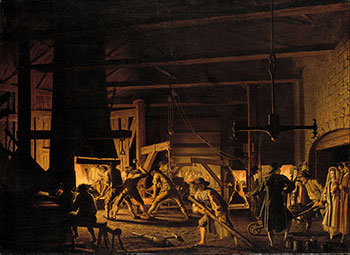 In some cases, a distinction is made between the industrial IoT and the consumer IoT. But when we talk about “Enterprise IoT,” our focus is less about specific application domains and more about openness and integration maturity.
In some cases, a distinction is made between the industrial IoT and the consumer IoT. But when we talk about “Enterprise IoT,” our focus is less about specific application domains and more about openness and integration maturity.
Here, we will take a closer look at some of the more industrial applications of Enterprise IoT, starting with a discussion about how IoT will transform manufacturing from the perspective of both product engineering and production technology.
Integrated production for integrated products
We believe that the IoT will have two main areas of impact on the current manufacturing landscape. The first concerns the organizational structure that is required to produce truly integrated IoT solutions. The IoT involves a clash between two worlds in which those in the machine camp and those in the Internet camp will be required to work together to create products that combine physical products with Internet-based application services. In an IoT world, many companies will discover that being just a manufacturing company or just an Internet company will no longer be sufficient; they will need to become both — or become subsumed in an ecosystem in which they play a smaller role. Read more…
